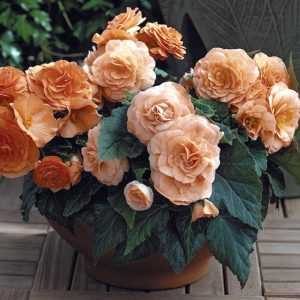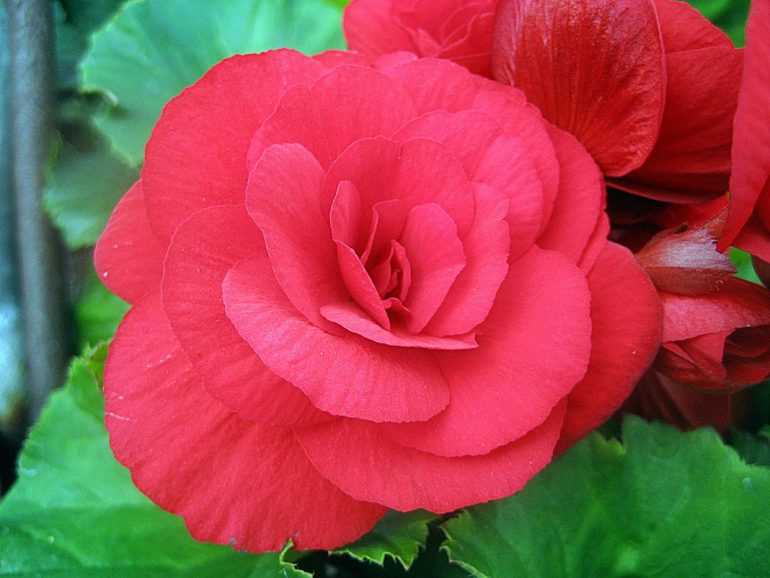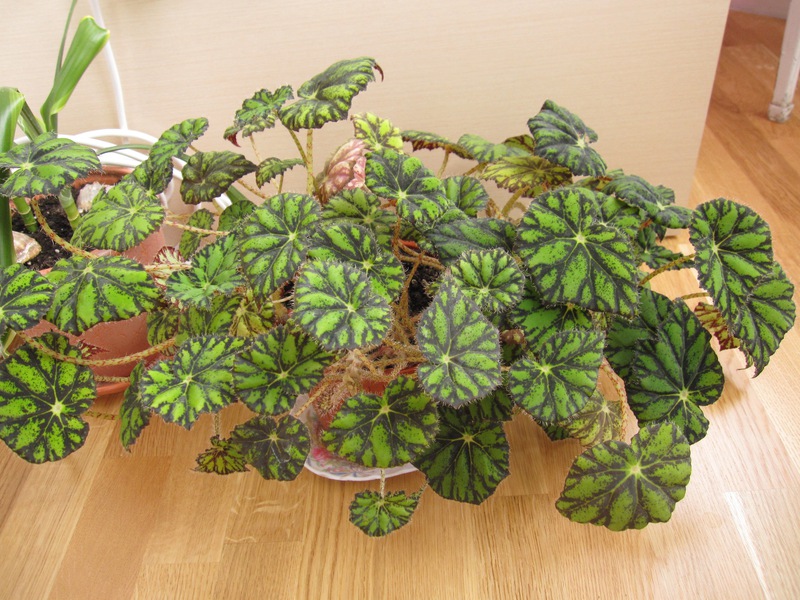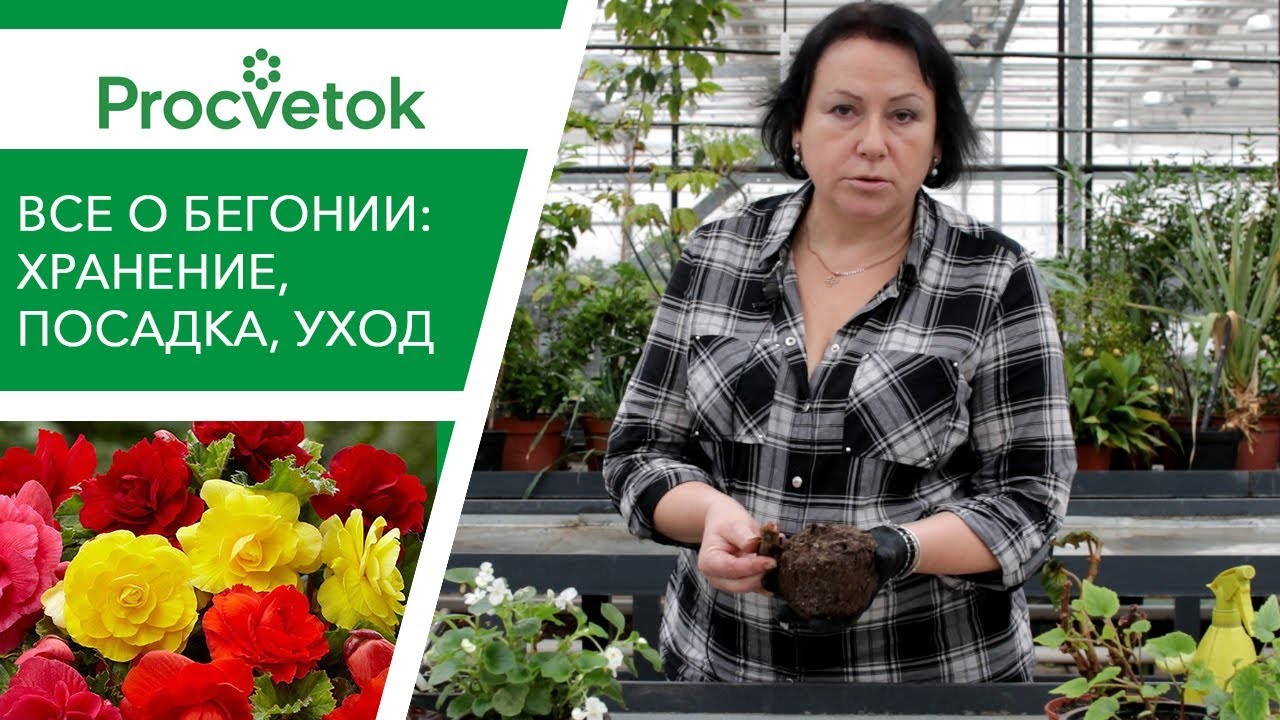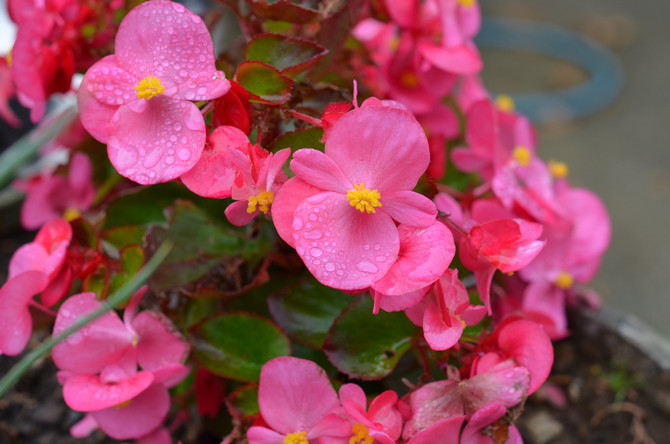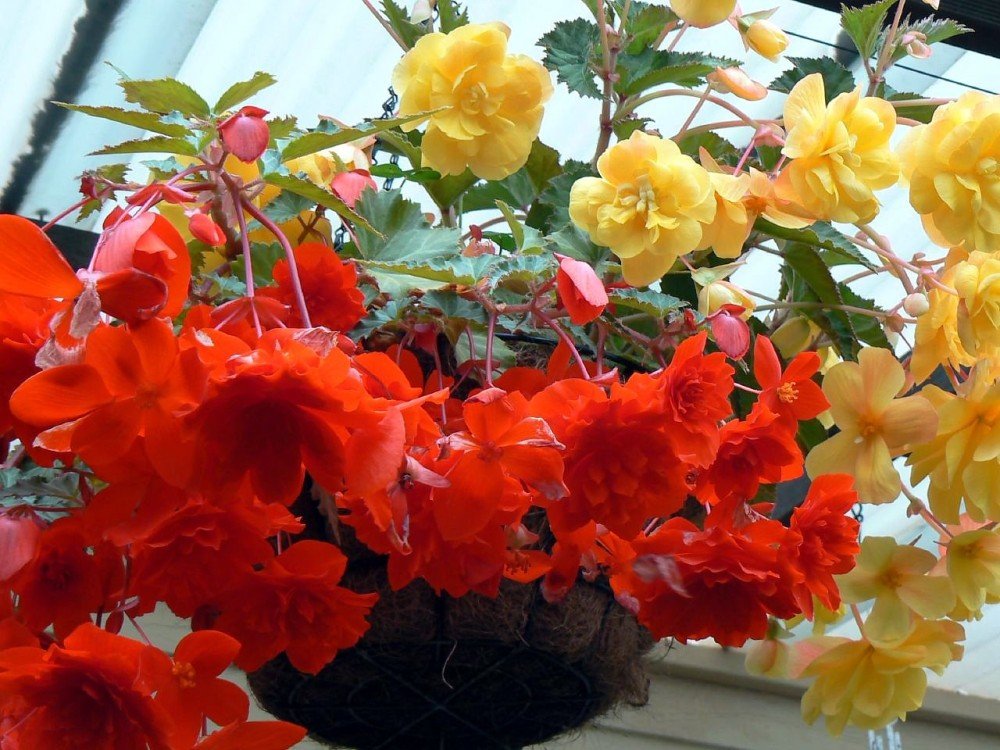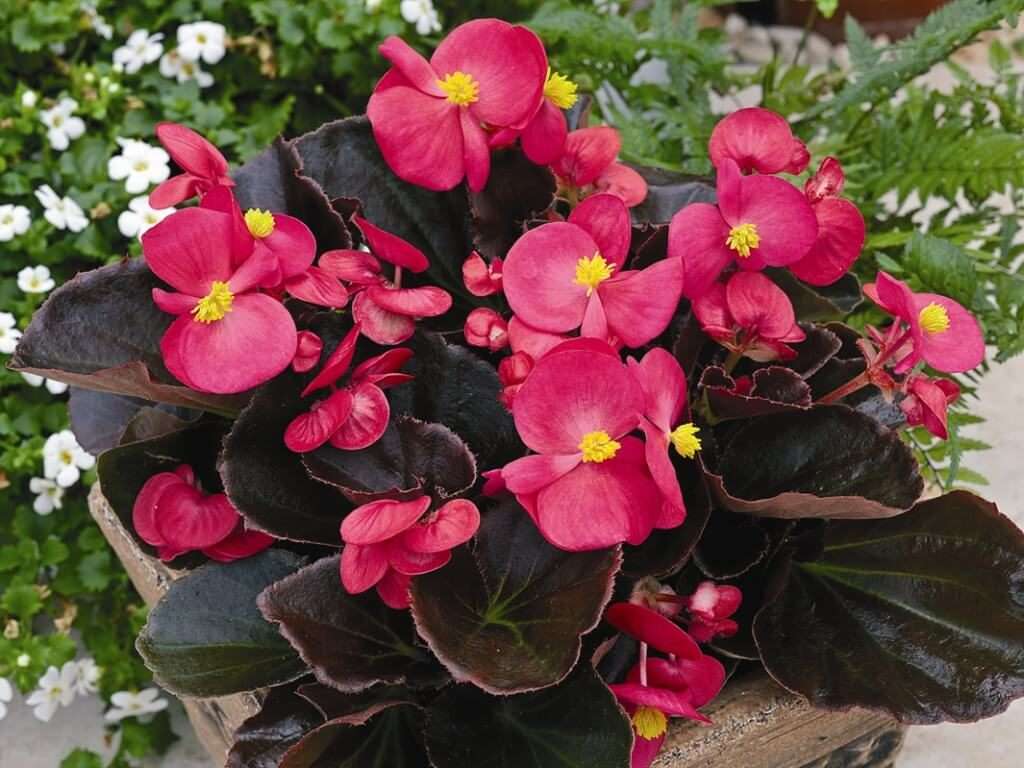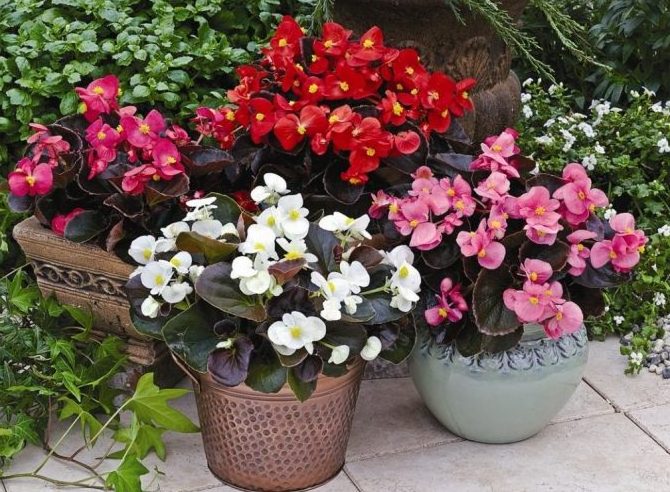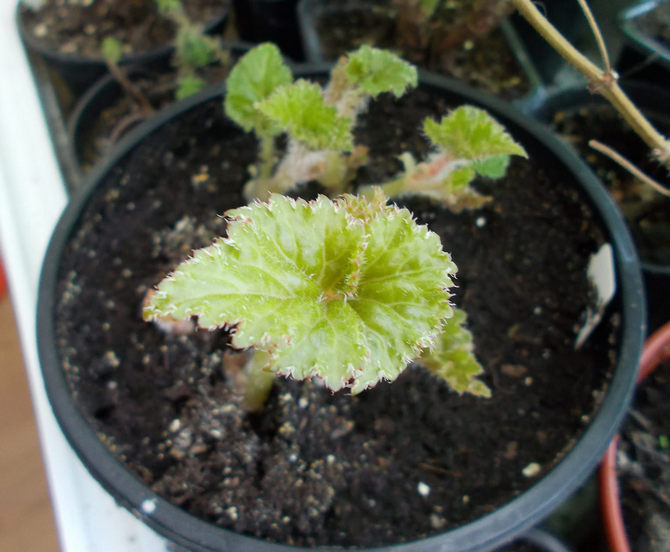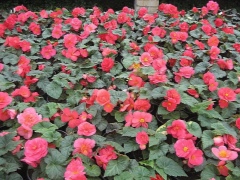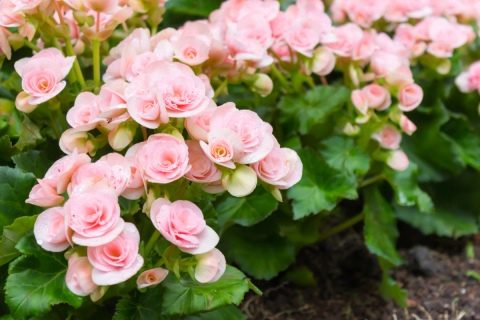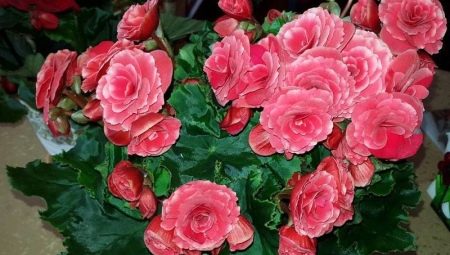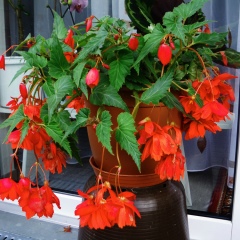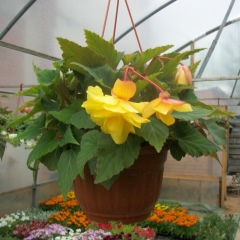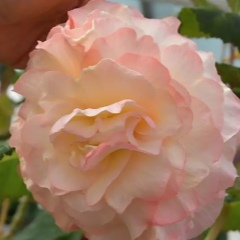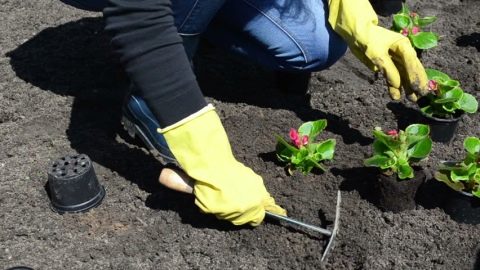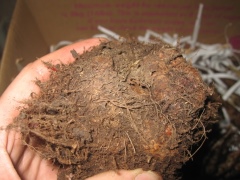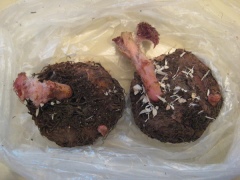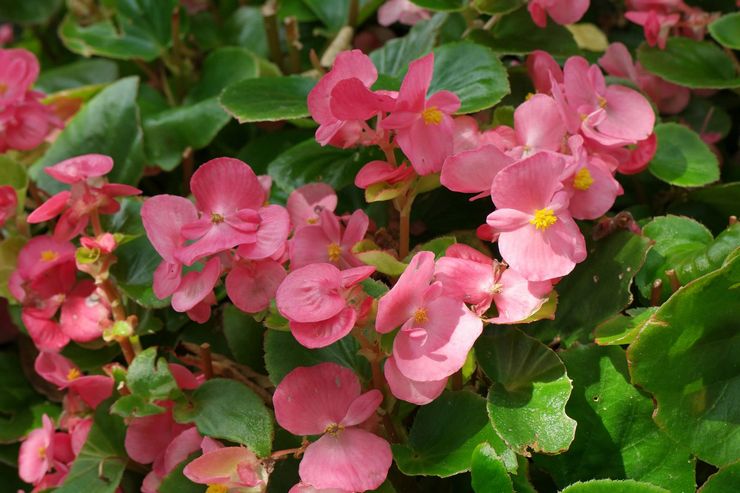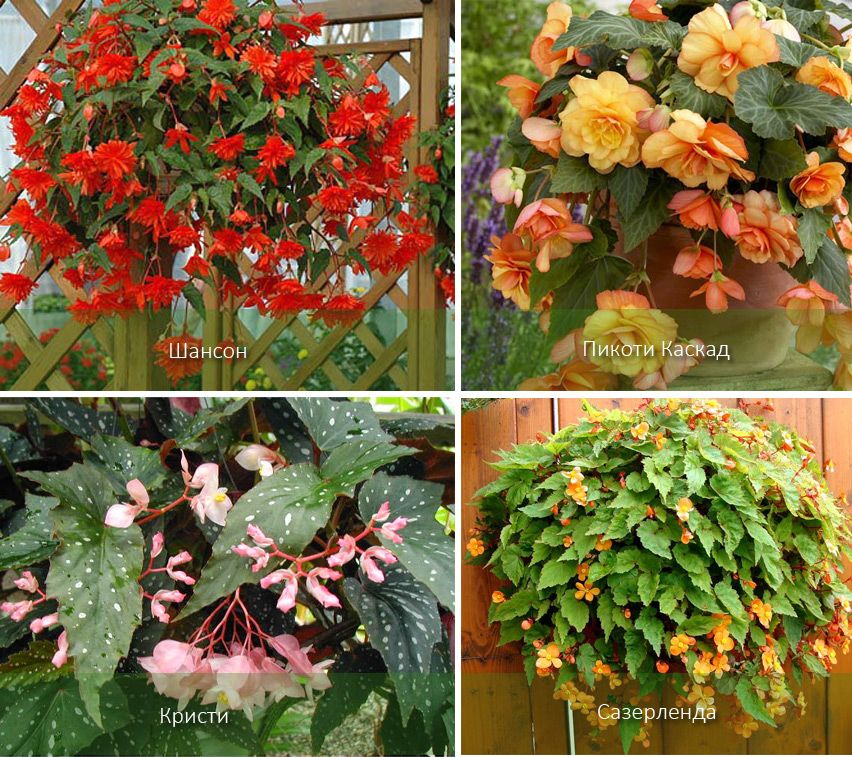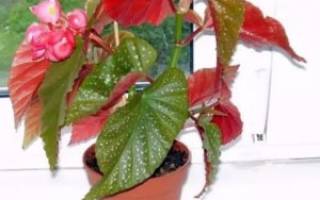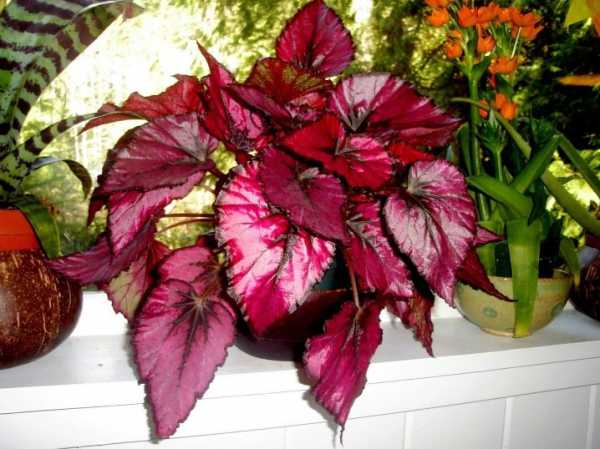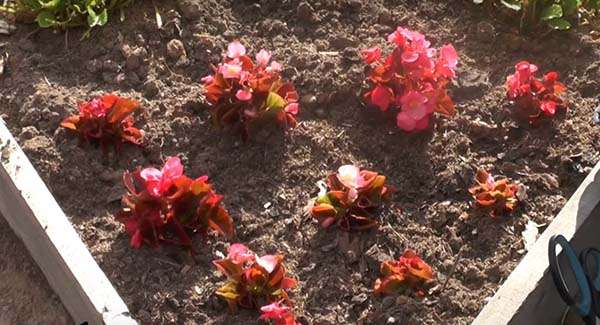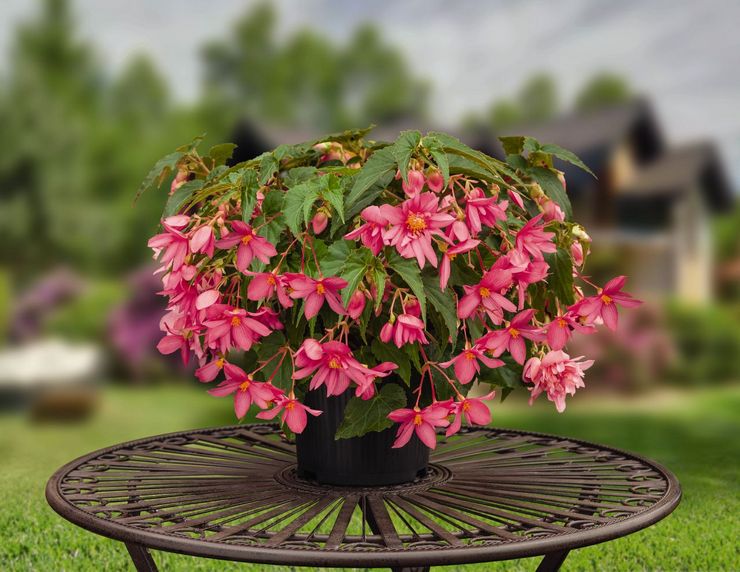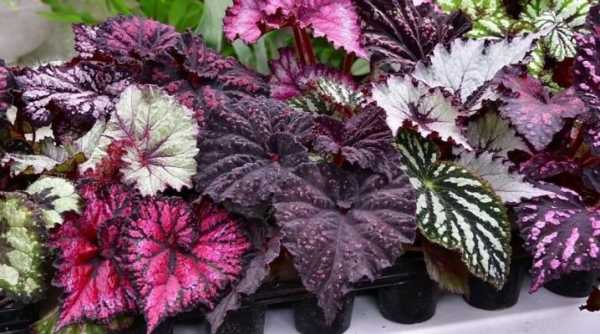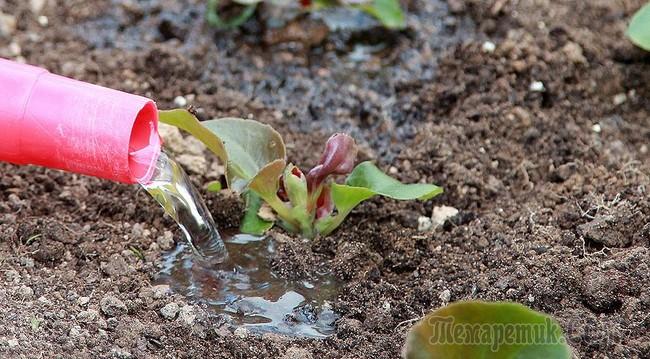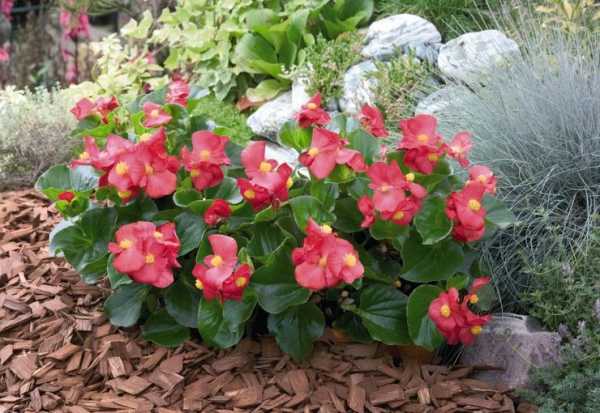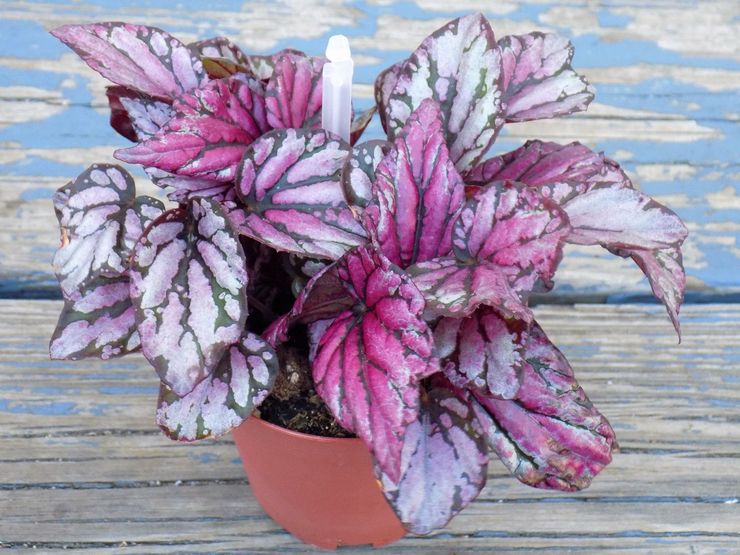Caring for begonia in the garden
Tuberous begonia is no less demanding than other plants. You will learn how to care for and how to grow it from the material below.
Soil and top dressing
The tubers are best planted in moist peat. In this case, the plant will receive maximum nutrition and begin to develop well, because it is not capricious to the lands. If it is necessary to plant begonias in indoor conditions, it will be easy for it in purchased soil, or you can make a soil mixture yourself. To do this, mix leafy soil with turf and sand in a ratio of 4: 1: 1. Such a soil has a slightly acidic reaction.
The plant loves fertile soil. It should not contain lime. Top dressing should be done approximately every seven days, from summer to late autumn. Fertilizers that are intended for home flowers are suitable for this purpose.
Watering
In order for the plant to always be luxuriantly blooming and beautiful, properly organized watering is necessary. In the heat of summer, the tubers should be watered generously. Drying should not be allowed. With good watering, at least three times a week, the plant blooms perfectly, and in the hot season, the bushes must be watered every day.
When watering, contact of liquid on flowers and leaves is unacceptable. The plant will bear it painfully. The plant has rather delicate, vulnerable roots. Heavy irrigation of the soil damages the roots and the plant can die. Therefore, watering the land where begonia grows should be done only after it dries up.
On the eve of the next watering, you need to make sure that the ground is completely dry. With a chronic ingress of water on the leaves of a plant, they will turn yellow and rot. The plant will gradually begin to die.
A plant in a pot at 40-degree heat should be cooled, for which the pot with it can be temporarily put in a basin, where cold stones or expanded clay are poured with water. Do not spray the plant.
Wintering
Like most tuberous plants, perennial garden begonia pleases with its flowering from spring to late autumn, but after all the buds have faded, its tubers are dug up. With the onset of September, you can already start preparing for this process: reduce watering, and stop feeding completely.
In mid or late October, the faded begonia is dug up, the tubers are cleaned of stems and small roots, washed, and thoroughly dried in a dry place for two weeks. Then they are placed in a box with wet sand or sphagnum moss and placed in a cool (6–8 ° C) place. Throughout the winter, tubers must be constantly examined and rotted tubers must be removed. Rotting occurs more often in the sand, so it is more prudent to use sphagnum for storage.
Diseases and pests
Comfortably located in the garden, begonia does not even suspect how many pests can defeat it at the same time! As a rule, these are insects: aphids, whiteflies, scale insects, thrips, nematodes
It is very important to prevent infection of the plant in time by using special processing agents, strictly adhering to the dosage recommended by the manufacturer.
Susceptible tubers are susceptible to bacterial lesions. In order to avoid the death of the root system of begonias, the ground and aboveground parts of the plant are treated with fungicidal solutions: Bordeaux liquid, copper sulfate, Fundanazole, Topaz.
You need to understand that the most common causes of tuberous begonia diseases are non-compliance with watering regimes and inappropriate soil.Having received bad soil, begonia begins to suffer from powdery mildew, gray rot, ring spot. In cases where the bush is very strongly affected, it should be destroyed, protecting the neighboring plants.
Begonia pests and diseases
The most common reason for the development of diseases is improper care of room begonia. Violations of the watering regime can cause wilting or rotting of the flower. If the flower is grown in a room, the infection can be brought in with shoes or clothing. Pests infect the plant and to get rid of them requires processing the bush with special compounds that can be bought in the store.
The most common pests that inhabit begonias are thrips, spider mites and nematodes. The best pest control agent is Actellic. They are sprayed with a flower at intervals of two weeks 2-3 times. Bordeaux liquid is used against gray rot, which affects the stems and roots.
There are diseases caused by bacteria. The affected plant cannot be saved and in order to avoid contamination of the rest, diseased begonias must be destroyed.
Begonia dries
This is how the plant reacts to too dry air and rare watering. The earth clod dries up, and there is not enough moisture in the air. To save a flower, you need to remove it from a place where the sun's rays are too much. Provide sufficient air humidity by placing containers of water around the begonia. To water the plant, for this it is better to put the pot in water so that the soil absorbs enough moisture.
Begonia leaves turn yellow
The leaves of begonias turn yellow mainly due to a lack of light and a lack of feeding. The soil is depleted and there are few nutrients in its composition. Another reason is pests that damage the roots of the plant.
It is necessary to change the soil in the pot, and rinse the roots in a manganese solution. Provide begonias with good lighting and timely feeding. Another reason a plant may turn yellow is a low room temperature or watering with cold water.
Begonia does not bloom
For a lush bloom, the begonia pot should be in a well-lit area, but not in direct sunlight. The plant requires timely pruning to stimulate budding. If this is not done, the begonia will not have the strength to gather buds and bloom.
Another reason may be the poor composition of the soil, begonias are periodically transplanted and fertilized. Watering should be regular and moderate. Due to a lack of moisture, the flower begins to fade and flowering is out of the question.
Begonia's buds fall off immediately after they appear.
Most likely the reason is that the plant does not have enough fertilizer. It is necessary to feed the begonia with fertilizers with mineral additives. The second reason is insufficient watering. Overdrying an earthen coma has a bad effect on the plant and does not allow the buds to open.
Depletion of the soil can also cause the buds to fall off, so it is better to plant the flower every spring in a new pot and new soil.
Tuberous begonia - home care
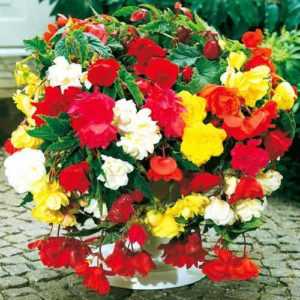 Tuberous begonia - home care
Tuberous begonia - home care
A vase of tuberous begonia is placed on a well-lit windowsill. An east or southeast window is suitable for a flower. If there is a lot of natural light, the leaves and flowers of tuberous begonia will change color (turn red). They may even begin to deform from sunburn.
If you put pots with tuberous begonias in a dark place, then the plants will begin to reach up, fall down and begin to bloom poorly. It is best to place the begonia tuber on a loggia or balcony (in the warm season).
Watering tuberous begonias
Watering tuberous begonias is quite difficult. To maintain flowering, the plant needs constant sufficient moisture. But not in the flowerpot itself. Often, pots with tuberous begonia are placed in a container with moistened peat.
Peat should be sprayed or watered daily to maintain an acceptable microclimate. With daytime watering, burns may appear on the leaves of tuberous begonia. Spraying should be done in the morning.
When watering, it is very important not to flood the plant, since the tubers and shoots of tuberous begonia are prone to decay. It should be fed with special mineral fertilizers.
The rhizomes of tuberous begonia are superficial, so over-watering should be avoided and care should be taken not to drip liquid onto the leaves. Periodically, it is recommended to thoroughly humidify the air around the plant. The ingress of water on the leaves and buds of tuberous begonia can provoke the appearance of rot, stains, and also damage by powdery mildew. All ovaries are recommended to be cut off immediately.
Be sure to lightly dry the lump of soil between waterings.
Particular attention should be paid to the watering process during the growing season of tuberous begonia. After flowering is complete, the frequency of watering should be reduced.
The ground part of tuberous begonia is placed in a container with tubers in a ventilated place, where it is not more than 9 degrees Celsius. Store in this form until March. In hot weather, the pot, where there is a begonia tuber, must be cooled. To do this, place the flower in a container with pre-moistened pebbles.
Lighting
Tuberous begonia needs sufficient lighting. But it does not tolerate intense natural light. The sun burns the delicate leaves and flowers of the plant. But the shade for tuberous begonia is also undesirable. It will grow and bloom very poorly: the shoots will become long and ugly, the leaves will fall off, there will be no flowering. At best, single flowers will appear.
The ideal option would be partial shade, where the sun appears only in the morning hours. Oriental windows are best suited. The begonia tuber should not be placed in an open area that is not protected from gusts of wind. The stems break very easily. Tuberous begonia does not tolerate drafts - because of them, it can shed its buds. Nevertheless, the flower needs frequent ventilation, as it loves fresh air very much.
Temperature
Tuberous begonia growing outdoors is not capricious. She doesn't care about the air temperature. Except when the summer is very cold. At home, the permissible air temperature is from +17 to +22 degrees Celsius.
In the cold season, depending on the storage method, not lower than +16. Intense heat inhibits blooming of tuberous begonia. In very hot climates, tuberous begonia suffers from strong winds and scorching sun. Therefore, on the terrace or in the garden, you should choose a place that is as protected from gusts of wind as possible, where the sun does not look after nine in the morning.
Possible problems and diseases
In winter, begonia is quite vulnerable to various diseases. The risk of such diseases increases significantly if flower care is carried out incorrectly. One of the fairly common problems that are recorded in begonias in winter is severe dryness of the edges of the leaves. In this case, the damaged leaf may even curl into a tube. Lead to the fact that begonia practically withers in a pot, as a rule, a decrease in humidity in the room and an uncomfortable temperature for the plant. Experts in this situation, when begonia grows poorly, recommend moving the plant to another place. If the decorative flower stood on the windowsill at the same time, then it should be removed to a less illuminated place.
Improper watering can cause fatal damage to begonias. Plants die at the same time due to the fact that the root system is significantly damaged. If water has accumulated in the pan with the pot where the flower is located, then the moisture must be removed immediately. In this case, the frequency of watering should be reduced.
A change in the turgor of the leaves can be caused by the fact that the flower is quite close to the plate. Such a problem occurs quite often in winter also because, in addition to household appliances, heating ones also work. This, in turn, contributes to changes in humidity and temperature in the room, which leads to the fact that the begonia leaves begin to wilt. In this case, the flower looks drooping.
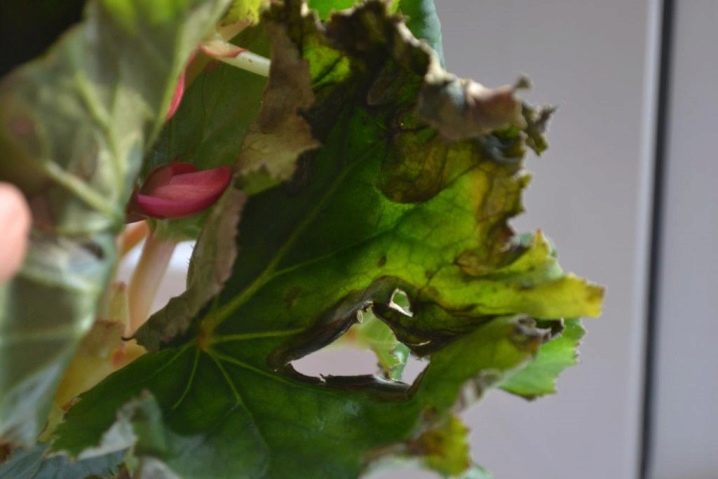
With the onset of unfavorable conditions, begonia can get sick. One of the diseases of this decorative flower is rot that develops on the stems or roots. The appearance of such manifestations on the plant is largely facilitated by the stagnation of moisture in the soil substrate. In such a situation, experts recommend that you definitely reduce the frequency of watering the plant, as well as measure the humidity in the room where it is located.
Heavy leaf fall is another problem that begonias lovers can face in winter. It can be quite difficult to "force" a flower to have juicy green leaves all year round in some situations.
Experts note that if the leaves of this decorative flower began to fall off strongly, then in this case it is recommended to pay attention to where it is. Quite often, the appearance of this problem is facilitated by wind hypothermia of the leaves.
This is often the result of finding begonias on a blown windowsill. If the leaves of an ornamental plant began to fall off strongly, it is recommended to remove it away from the window, and also to protect it from any drafts.
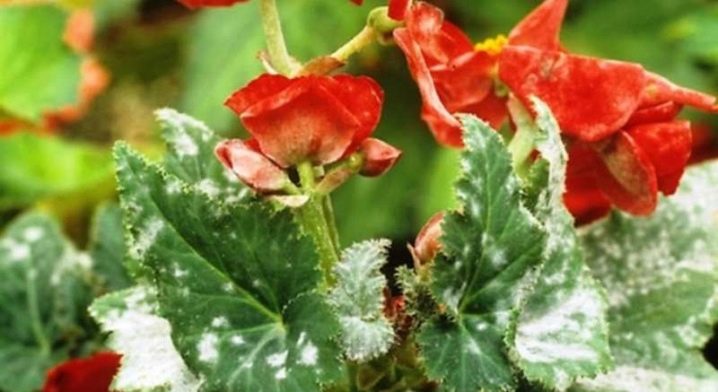
The appearance of yellow spots on the leaves of begonia and a change in its turgor is one of the possible diseases that can be detected in this plant. Cucumber mosaic viruses can lead to such adverse symptoms. It is rather difficult to cure a plant affected by these microbes at home. In this case, the diseased flower should be immediately moved to "quarantine", otherwise it can become a source of spread of infection to other plants.
Begonia, like many other indoor plants, can also be affected by powdery mildew. This disease is characterized by the fact that light spots with a specific bloom appear on the foliage of the flower. If such symptoms appear, then this ornamental plant must be treated with fungicidal agents.
For information on how to care for begonias in winter at home, see the video.

